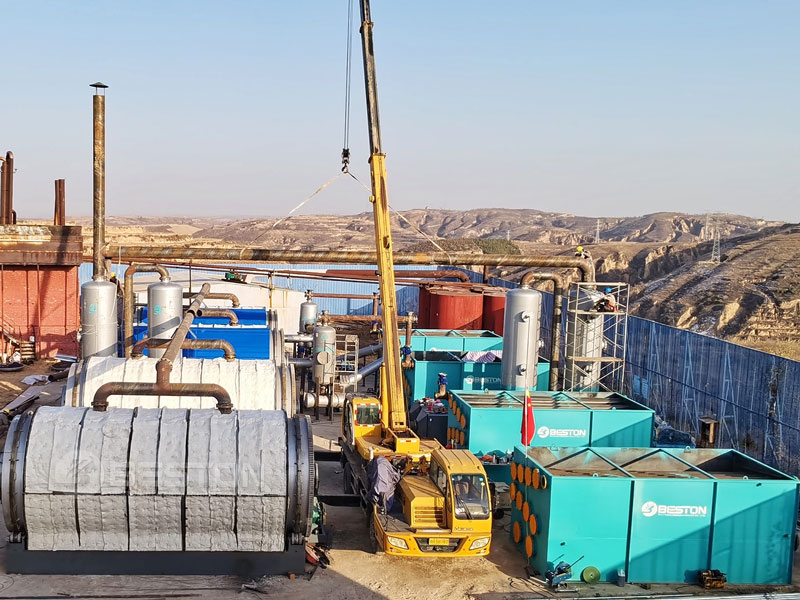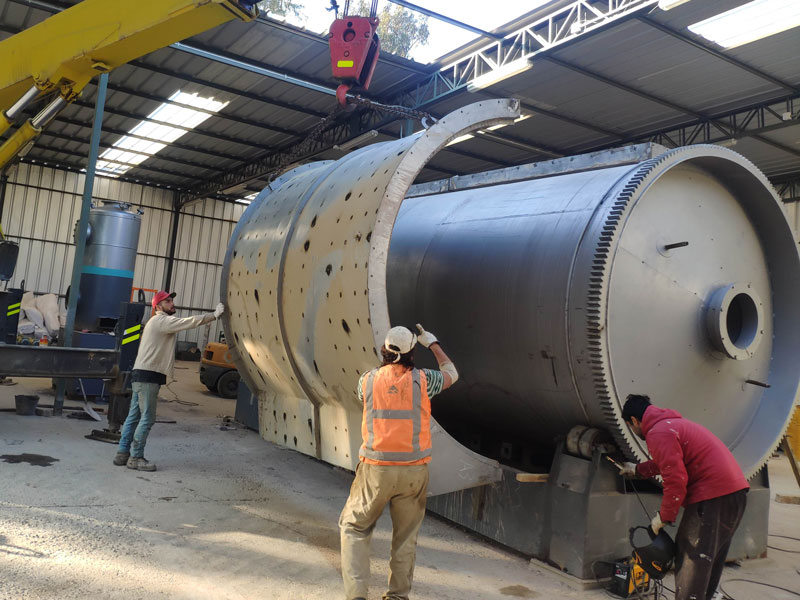Waste Tyre Pyrolysis Plant: A Sustainable Solution to Waste Tyre Disposal
As the world’s population continues to grow, the demand for automobiles and transportation increases, and so does the number of waste tyres. The improper disposal of waste tyres can cause serious environmental and health hazards, including air pollution and breeding grounds for mosquitoes and other disease-carrying pests.
Fortunately, waste tyre pyrolysis plants offer a sustainable solution to this problem. These plants use a process called pyrolysis to convert waste tyres into valuable resources, such as fuel oil, carbon black, and steel wire. In this article, we’ll take a closer look at the waste tyre pyrolysis process, its benefits, and its potential impact on the environment.
The Waste Tyre Pyrolysis Process
Pyrolysis is a thermal decomposition process that occurs at high temperatures and in the absence of oxygen. Waste tyres are first shredded into small pieces and then fed into the pyrolysis plant reactor. Inside the reactor, the waste tyres are heated to a temperature of around 400-450°C, causing them to break down into their constituent parts.
The gases and vapours produced during pyrolysis are then condensed into liquid form, which can be further refined into fuel oil. The solid residue left behind, known as carbon black, can be used as a fuel or as a raw material for various industries. The steel wire in the tyres can also be extracted and sold for recycling.

Benefits of Waste Tyre Pyrolysis Plants
Waste tyre pyrolysis plants offer several benefits over traditional waste disposal methods. Firstly, they provide a sustainable solution to the problem of waste tyres, which can take up space in landfills for decades or even centuries. Secondly, the fuel oil produced by the process can be used as a substitute for traditional fossil fuels, reducing our reliance on non-renewable resources.
Furthermore, waste pyrolysis equipment for sale can help to reduce carbon emissions and combat climate change. By converting waste tyres into fuel oil, the plants provide an alternative to extracting and burning crude oil, which is a major contributor to greenhouse gas emissions.

Environmental Impact of Waste Tyre Pyrolysis Plants
Like any industrial process, waste tyre pyrolysis plants can have an impact on the environment. However, if operated correctly and with proper emissions controls in place, the impact can be minimized. For example, the process can emit pollutants such as sulfur dioxide and nitrogen oxides, which can contribute to air pollution. To address this, some plants use scrubbers and other emission control technologies to remove these pollutants from the exhaust gases.
In addition, the waste tyre pyrolysis process can produce a significant amount of waste water, which can contain harmful chemicals and heavy metals. However, some plants use a closed-loop system that recirculates the water and treats it before reuse, minimizing the environmental impact.
More details: https://bestonasia.com/waste-tyre-pyrolysis-plant/what-is-tyre-pyrolysis/.
Conclusion
Waste tyre pyrolysis plants offer a sustainable solution to the problem of waste tyre disposal. By converting waste tyres into valuable resources, they provide a source of renewable energy and reduce our reliance on non-renewable resources. However, it is important to operate these plants responsibly and with proper emissions controls in place to minimize their environmental impact. As we continue to face the challenges of climate change and environmental degradation, waste tyre pyrolysis plants have the potential to play an important role in creating a more sustainable future.